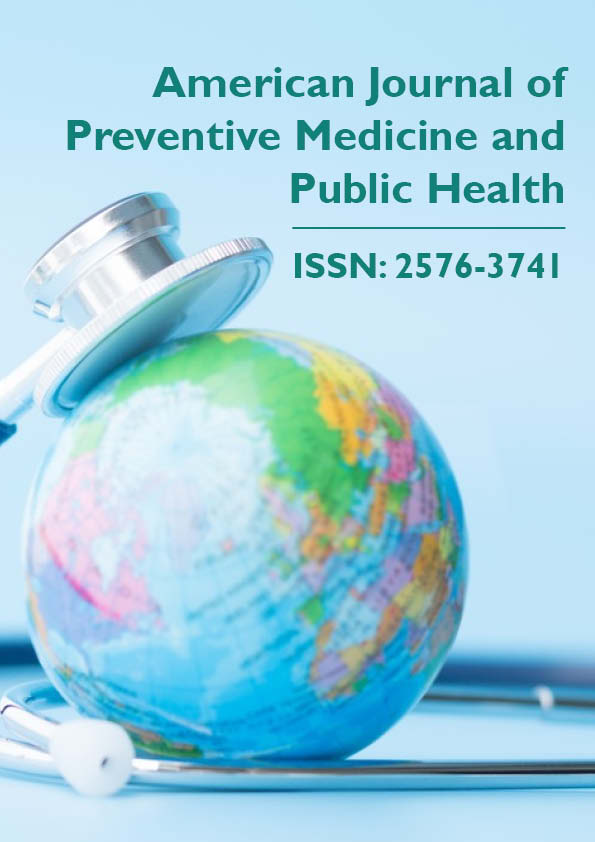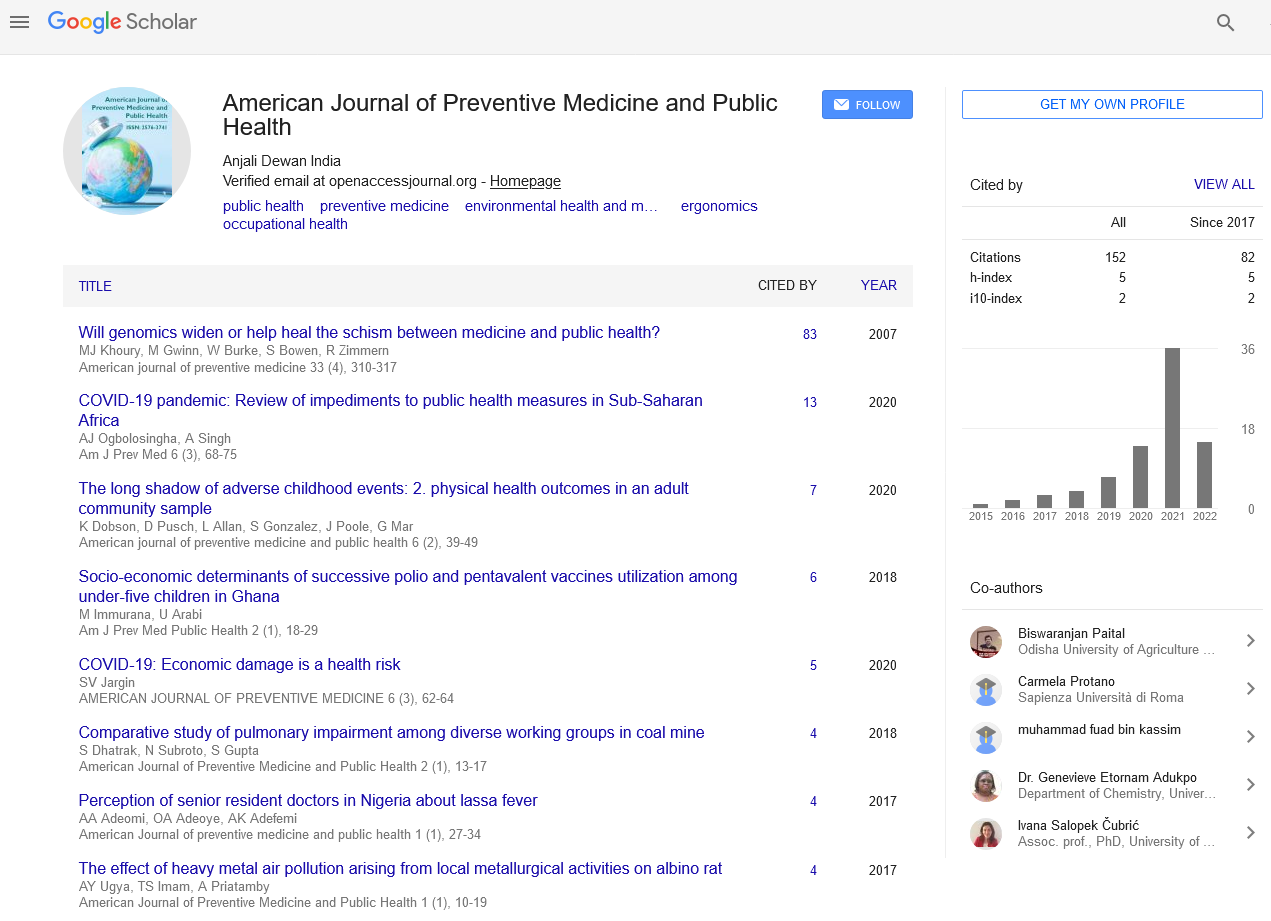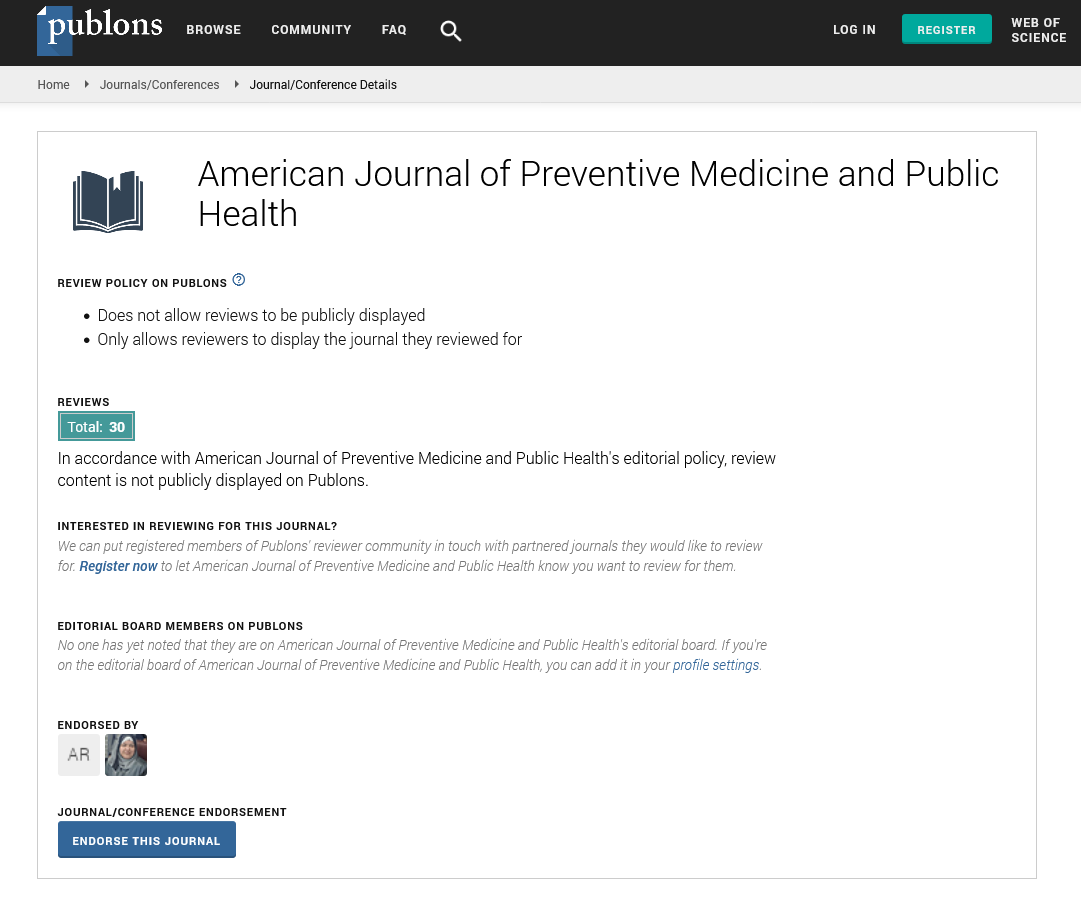Commentary - American Journal of Preventive Medicine and Public Health (2022)
Causes, Symptoms, and Preventive Measures of Respiratory Diseases
Yonghua Chen*Yonghua Chen, Department of Epidemiology, School of Public Health, Fudan University, Shanghai, China, Email: sheparddonald@yahoo.com
Received: 04-Apr-2022, Manuscript No. AJPMPH-22-64416; Editor assigned: 06-Apr-2022, Pre QC No. AJPMPH-22-64416 (PQ); Reviewed: 21-Apr-2022, QC No. AJPMPH-22-64416; Revised: 26-Apr-2022, Manuscript No. AJPMPH-22-64416 (R); Published: 04-May-2022
Description
Respiratory diseases, also known as lung diseases, are pathological conditions that affect the organs and tissues of air-breathing animals, making gas exchange difficult. They include respiratory tract conditions such as the trachea, bronchi, bronchioles, alveoli, pleurae, pleural cavity, nerves, and muscles of respiration. Respiratory diseases range from mild and self-limiting conditions like the common cold, influenza, and pharyngitis to potentially fatal conditions like bacterial pneumonia, pulmonary embolism, tuberculosis, acute asthma, lung cancer, and severe acute respiratory syndromes like COVID-19. Respiratory diseases can be classified in a variety of ways, including organ or tissue involvement, type and pattern of associated signs and symptoms, and disease cause.
When we are healthy, we take our breathing for granted, never fully appreciating how important our lungs are to our survival. But when our lung health deteriorates, we realize that nothing but our breathing matters. That is the agonizing reality for those suffering from lung disease, a condition that affects people of all ages all over the world. Lung diseases kill millions and injure millions more. Threats to our lung health abound, and they begin at a young age when we are most vulnerable. Fortunately, many of these threats can be avoided and their consequences can be treated. We can save ourselves and many others if we act now.
The respiratory disease has a massive health impact. It is estimated that 235 million people worldwide suffer from asthma, more than 200 million have Chronic Obstructive Pulmonary Disease (COPD), 65 million have moderate-to-severe COPD, 1–6 percent of the adult population (more than 100 million people) have sleep-disordered breathing, 9.6 million people develop Tuberculosis (TB) annually, millions have pulmonary hypertension, and more than 50 million suffer from occupational lung diseases. At least 2 billion people are exposed to the toxic effects of using biomass fuel, 1 billion to outdoor air pollution, and 1 billion to tobacco smoke. Chronic respiratory disease kills 4 million people prematurely each year.
The situation in India is equally concerning. Some Indian cities are currently ranked among the most polluted in the world, and we are witnessing the consequences. Cigarette smoking is very common in Assam, and rising pollution is causing many respiratory diseases.
Cough, shortness of breath, chest pain, and hemoptysis (blood in the sputum) are the most common symptoms of respiratory diseases. Coughing can last for a long time, along with expectoration and, in some cases, hemoptysis. The presence of blood in the sputum is concerning, and the patient should be thoroughly investigated.
Asthma patients typically present with a cough with expectoration and easy fatigability, which may vary seasonally. COPD patients have a cough with expectoration and easy fatigability, which progresses gradually unless properly treated. Tuberculosis is a very common disease that causes coughing, expectoration, hemoptysis, weight loss, and a variety of other symptoms.
Lung cancer is the second most common cancer in both men and women today. The most common cause of lung cancer is cigarette smoking. It can develop in nonsmokers as a result of radon exposure, air pollution, asbestos exposure, and other factors. Cough, hemoptysis, weight loss, fluid accumulation in the pleural cavity, and other symptoms are common in lung cancer patients. If the patients are in the late stages of their disease, the prognosis is usually bleak.
As a result, it is prudent to advise any patient experiencing these symptoms to consult a pulmonologist. Many of these patients require tests such as a chest X-ray, CT scan, bronchoscopy, pleural biopsies, polysomnography (for patients with sleep disorders), and many others.
In their daily practice, general practitioners see a lot of cases of respiratory diseases. When a patient has COPD with frequent exacerbations, severe asthma, ILD, radiologically suspicious of tuberculosis but sputum is negative for tuberculosis, and non-resolving pneumonia, they should be referred to a pulmonologist.
For the latter two conditions, bronchoscopy and other advanced tests will be required. Preventive measures include: Cigarette smoking is the leading cause of respiratory diseases worldwide. As a result, quitting smoking is critical. Air pollution is also a major issue in today’s world, so wearing a face mask is strongly advised. An asthma attack may be triggered in some patients by eating certain foods or being exposed to cold. As a result, avoiding these situations is advised for those patients.
Finally concludes that respiratory diseases cause serious problems in society, and that all members of the medical community and society must work together to reduce the challenges posed by these diseases.
Copyright: © 2022 The Authors. This is an open access article under the terms of the Creative Commons Attribution NonCommercial ShareAlike 4.0 (https://creativecommons.org/licenses/by-nc-sa/4.0/). This is an open access article distributed under the terms of the Creative Commons Attribution License, which permits unrestricted use, distribution, and reproduction in any medium, provided the original work is properly cited.







